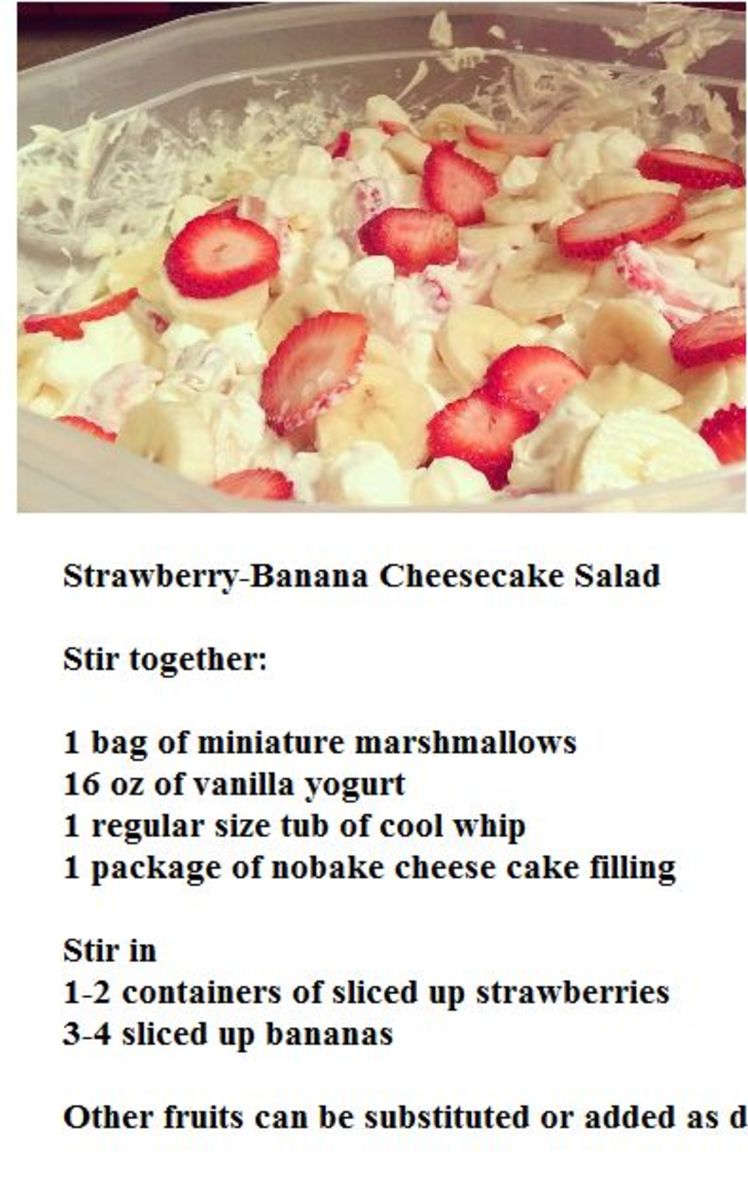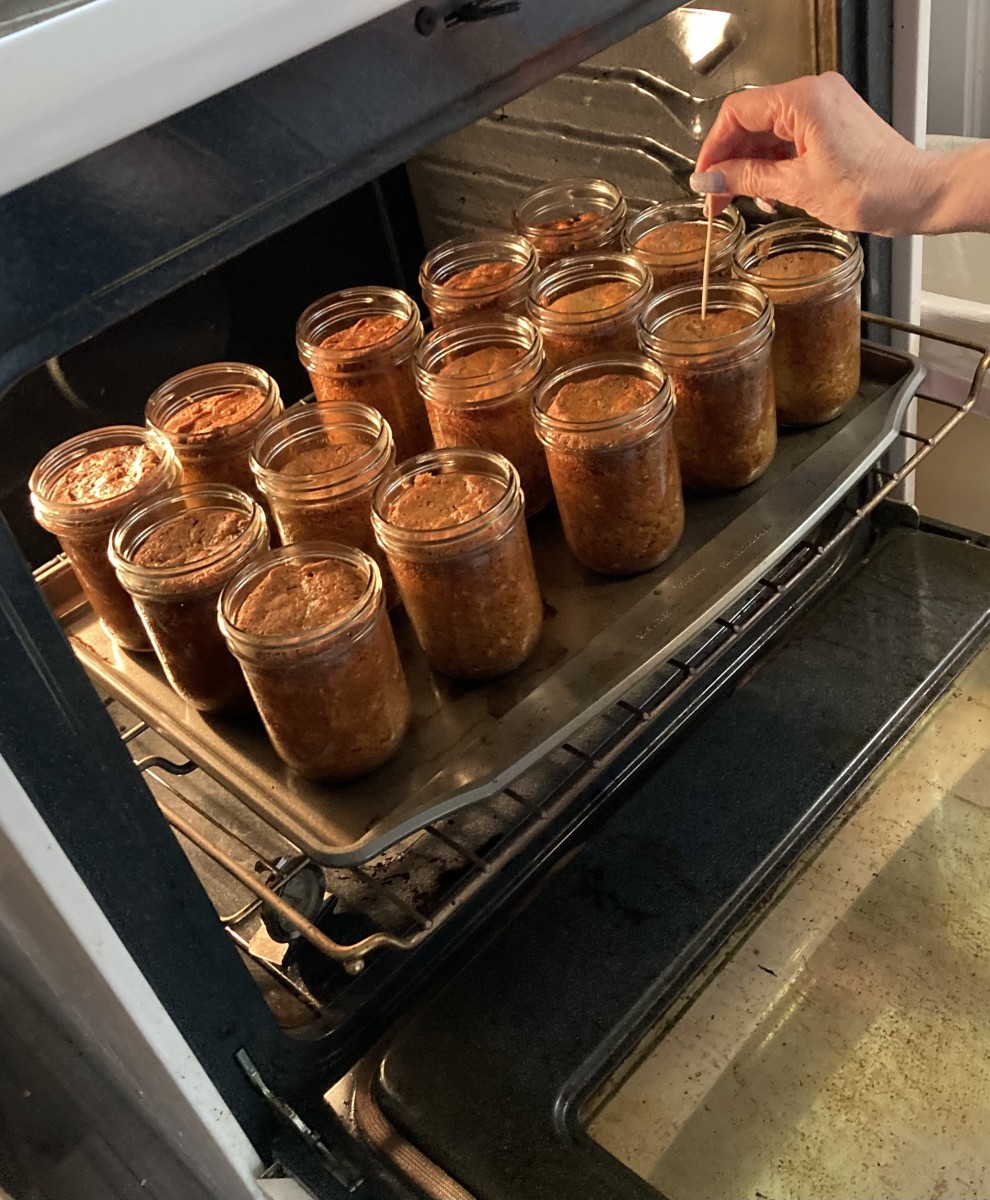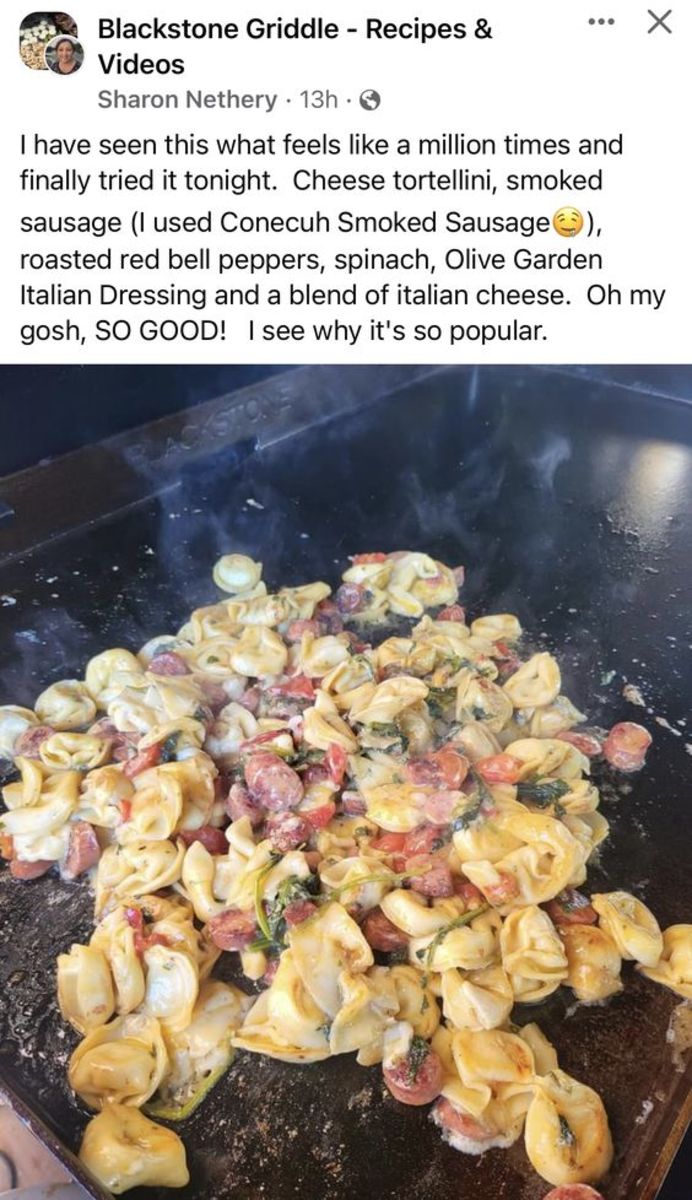Everything you ever wanted to know about cooking, but were afraid to ask, and more.

Baba Ganoush, Eggplant dip
Baba Ghanoush; first of the B's in any culinary dictionary!
They have nothing to do with Ali Baba, except the name.
Don't expect to get a straight answer on this either.
There are about, lots, of variant recipes from similar cultures, all using the basic same ingredient, or recipe.
Take an aubergine, or two. Slice them lengthways, assault them, with salt & set aside.
The salt draws out xs liquid from the eggplant, wipe it off & discard, it's done its bit.
Bake them until soft.
Scoop the flesh out & blend it with yoghurt, tahini, mint, and coriander & lemon juice. Some olive oil to blend it all down to a paste!
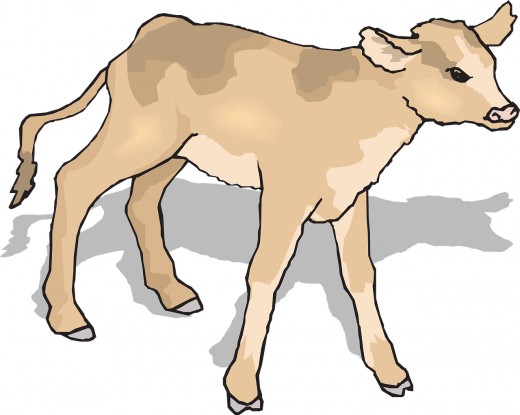
Baby baby baby...
Baby; Nowadays you see a lot of baby vegetables and the like.
Those clever people that grow the seeds make miniature versions of vegetables etc, but they are grown to full term, as a miniature. So they not really babies.
The practice of eating babies is not unheard of however;
Milk fed Veal may only be days old, like little colts with big baby eyes, snatched from their mother’s udder & ruthlessly slaughtered, to cater for mankind’s more obscure tastes.
Remember this too, next time you criticise another race over their dietary choices, we are not innocent, throw no stones...
Bacteria
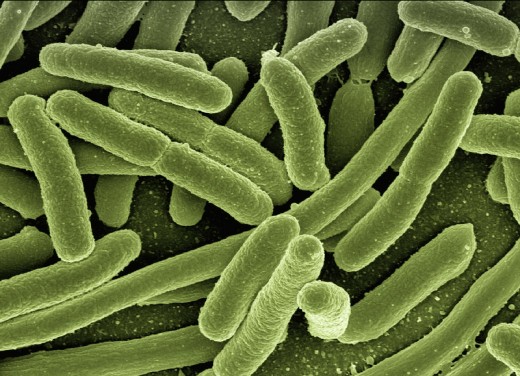
Bacteria
Bacteria; We think of bacteria as 'Germs' Bacteria receive press for being bad!
But, we're the ones calling them names, they rule the earth, we live in their world.
People are full of it, bacteria that is, 90% of your stool is bacteria, your gut is thriving with the little buggers, and you couldn't live without them.
Then again you couldn't live with them if they were found in the wrong place at the wrong time.
Even minute amounts of say Erishira Coli can rapidly multiply & make you suddenly ill.
We call this Pathogenic Bacteria, the ones that can kill us!
without remembering all the major pathogenic bacteria on a first name basis, Salmonella typhemurium, Clostridium perfringens, good ole staphlococcus aureus, Clostridium Botulinum, Listeria monocytogenes.
These can all make you ill, possibly even dead.
If that chicken is green & smells a bit off, throw it! Same for fish.
But if its red meat it's still good, that's our friend Proteolytic enzymes which will break down, or age meat, tenderising it, it's a non pathogenic bacteria, but you may prefer to eat your meat fresh....
It's a lot to do with post mortem changes in meat, glucose in the muscles converts to lactic acid, giving meat a slight Ph edge which will discourage some bacterial growth & aid in the shelf life of that steak!
Accelerated aging advances this process, so that rigor mortis accelerates & the meat can be frozen quicker.
This is so you can take a roast straight from the freezer to the oven without it shrivelling to an acorn...
How do you like your dairy products, yoghurt? Cheese?
Using a naturally occurring biological process to Mans advantage...
Man has been living in harmony with Bacteria for millennia; we've made a few attempts, over the year to destroy bacteria.
Bacteria have also played its part in overthrowing mankind, but Bacteria are a bit smarter, germs don't have battle cruisers or weapons of mass destruction.
Bacteria uses his smarts a bit more, he can eat us out of house & home, destroy everything we know as our own.
So we call a truce, we live in a happy symbiosis, we really only fight bacteria back with short jabs, we don't have anything to back it up with.
Our current weapon of choice is antibiotics & that's genocide.
We care not for casualties, or Geneva conventions, we kill all bacteria, kill them all, let God decide who was innocent...
The secret to living with the neighbours is to not let them get on top of you.
Bacteria are just waiting for you to provide them with an opportunity, leave anything out & they'll have it, it's like having a hungry dog in the kitchen!
The best thing to do is to minimise their impact, exclude them; do not invite them to a party.
Keep it clean, Keep it hot, or keep it cold, keep it dry.
If in doubt, throw it out!
Bacon
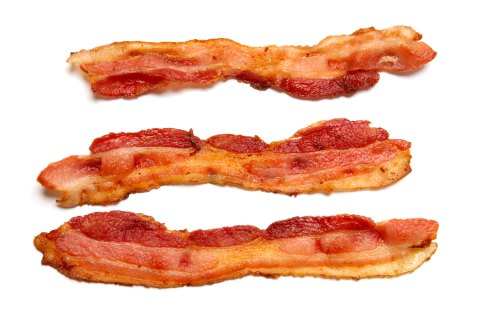
Bacon
Bacon; the cured & smoked belly of a swine carcass.
Bacon can be almost any cut nowadays.
But it is universally the pig that pays the price!
Traditionally the pigs skin is left on the bacon, this becomes the rind, although rind less is increasingly available.
The value of bacon cuts depend from where on the poor pig they are removed.
Back or loin bacon is considered the best because it is lean.
Streaky bacon also has its followers. It has a higher fat content, therefore more flavour.
It is the fat that carries the flavour.
Historically, bacon was used as a means of preservation, curing in salt & smoking made the going hard for bacteria.
Nowadays, Bacon may just be swine marinated in nitrates, a shortcut which bypasses the traditionally time consuming & labour intensive processing of true bacon.
If you pick up a packet of cheap bacon.
If it's swimming in juices inside of the plastic, it's not the real deal, what you are paying for is still technically bacon, but much of the weight you are purchasing is excess liquid.
This will be lost during the cooking process; your yield will in fact be less than if you had purchased premium bacon!
Don't be fooled folks, read the label.
Once it was strongly recommended, almost insisted upon, that any porcine product was to be thoroughly cooked.
There was a parasite which could be transmitted to Human, Trichanella spirella if you would like an introduction...
Nowadays this is almost entirely eradicated & the warnings of cooking pork thoroughly no longer apply.
But still persist...
My favourite trick question is to ask a Chef “Is this Halal bacon”? Figure that out?
Bad

Bad...
Bad; People love to bandy this word around.
We usually refer to 'bad' as spoilage. "I'm bad, so's this apple."
To keep things 'good', segregate!
Keep the bad away from the good.
The bad is pervasive, it only takes 1 bad apple to spoil the lot.
Excise! Show no mercy, slice that bad off & throw it away.
Allow the good to prosper!
But don’t read too much into it, it's not a moral dilemma, the bad is just doing what bad does.
Bad is good to the minions, they are waiting to devour & return to the earth anything organic that stays still long enough..
Baked?

Baked
Baked; Why do we not pronounce naked & baked the same? I baked naked?
To bake is to cook by convection, that is, transfer of the ambient temperature into the food.
Really the food has to be in contact with part of the oven, the rack & the tray, so contact does play a part, but it is generally assumed baking is a non contact dry heat.
But... technically you are baking if you cook in hot ashes...
The chemical reactions in baking are quite complex
But simply put, it's the starches converting to sugar that's mostly responsible for that pleasant browning on a crust of bread.
The Maillard reaction is the complex equation of amino acids & reducing sugars combined with heat which give this browning effect, incidentally the same as on red meat....
It also imparts the colour from barley to malt which gives beer its characteristic colour.
Baked is something I have been personally acquainted with in my own life also, on the odd occasion…
bent banana

Banana
Banana; A Hand of bananas is the correct term, not a bunch.
Bananas are technically an herb, definitely not a tree.
Banana is not fruit, technically it's a berry!
Plantains are also a banana, but eaten green, as a vegetable.
Baby bananas are known as Ladies fingers!
They're all good, they're loaded with potassium. Keep any unused bananas; throw them in your garden!
Also try freezing them, they won’t freeze hard.
It's possible I supposed to pawn them off on some susceptible child as frozen confectionary... Interesting if your family is plagued by allergies prohibiting the consumption of real ice cream...
But don't leave them in the fridge, they will go brown...
The banana we have come to know & love is actually from the same banana tree,
The original Adam & Eve were cloned.
Wild Bananas which still can be found in their native Malaya, (as it was known to the western world), Have a large stone in them & not much flesh.
Bananas are also ripened by convenience.
Since they cannot be transported when they are ripe for fear of bruising they are ripened at point of sale.
Unripened bananas will last several times longer on your shelf.
Banoffie is my favourite, probably my only, banana recipe.
Line a flan with short crust, or biscuit base. Make some caramel, condensed milk style.
Slice the nanies with some lemon juice & some coffee liqueur, lay them out on the base, and spread the caramel, top with whipped cream!
Balsamic

Balsamic
Balsamic; A lot of vinegars have adopted this label. Very few of them are the real deal. They may employ a few liberties with their product marketing, 'Balsamic style'
Balsamic, like Champagne, is more than just a brand.
True balsamic comes from the Modena region of Italy.
It is not even true vinegar, rather a grape syrup reduction.
Have a close look next time you shop for balsamic, don't expect to see true balsamic on the budget isle any time soon.
Bangers & Mash
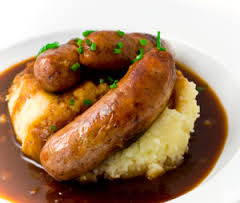
Bangers & Mash
Bangers & Mash; Simple home-style food like this will never go out of style, if you serve grilled sausages with any flavour mash, onion gravy & peas you will be on to a winner. Silence at the dinner table is the best compliment.
These home-style traditional recipes are making a comeback. Comfort food.
Try some lean Italian sausage, with garlic mash.
Really go avant garde try mushy peas!

Bard
Bard; Wtf? Is this something to do with Shakespeare?
No, Barding is covering a meat object (usually, but not limited to...) with strips of bacon.
You may find this method useful if you are preparing a game bird or similar that has a very low fat content.
Larding is a similar technique, whereby you stitch threads of bacon through the meat with a needle...
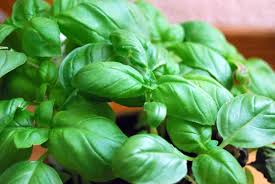
Basil
Basil; a handy little herb, it smells nice, looks nice & tastes nice too, so far it's a winner.
But there's more. Plant Basil around your garden, around your tomatoes definitely, it gives the fruit an added flavour.
Plant Basil in window boxes, it keeps ants & flies away.
However I must caution against powdering basil & inhaling it through the nostrils.
It allegedly causes users to turn mad with a nest of scorpions in their brain.
This is scientifically unproven, but you never know....
Batter?

Batter
Batter; the simplest batter is flour & water, check out your local fish & chip shop, see what they're using!
Beer batters are popular; just use beer instead of water. One thing to beer in mind (sic) is; please use low alcohol beer, it's just a crying shame to use full strength when there are so many people in the world cannot afford a decent beer!
Whatever beer you use, from dark malt to a lager is up to you.
There's variations, yeast batters etc. I'm only making you aware of this fact, every cook chef in the world, as every cookery book will have their own 'one true version'
Tempura is basically a thin batter used to coat vegetables etc in what was once solely the realm of Japanese cooking. Now it’s descendants can be found anywhere, in one guise or another. Usually it's just flour & cornflour mixed to a thin paste, with or without eggs, yolks or whisked whites.
Something I’ve found interesting in my commercial career is the use of egg yellow colour to colour the batter a golden colour. Eggs do work just as well & are preferable in a domestic setting.
Forget what you've been told about adding the liquid to the dry. You will get lumpy batter; I’ve had 100% success adding the flour to the liquid.
Variations for celiac; try chickpea flour!
Batter won’t stick to wet food, so make sure you completely cover the surfaces of whatever you are about to fry.
This is called to dredge, in case you wondered?
Uncooked cake mix, pikelet, pancake, or crepe mix is called batter also.
Baby batter, well that’s something else, where babies come from…
BBQ
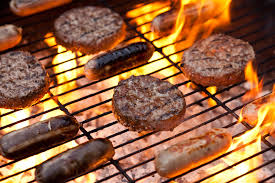
BBQ
BBQ; The opposite of cooking, to throw edible food onto a rack above live embers, or gas flames & allowing the meat etc to remain on said rack until it is indistinguishable as food.
Plenty of BBQ recipe books but the secret is turn the heat down, let it cook a little longer. Be gentle with your food, don't incinerate it! What's it done to you?
An animal gave its life to be at your party, treat it with some respect.
Beans
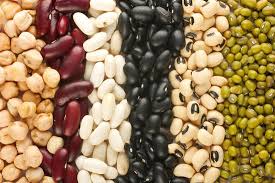
Beans
Beans; Or Legumes, peas, beans, lentils, pulses...
A quick search comes up with at least 40 varieties of beans.
A few of the dried beans are poisonous if eaten raw, but who would?
Soak them overnight & discard the water, and you're good to go!
Fresh beans & peas you can eat fresh with or without cooking.
A little tip: If you're using beans in acidic dishes such as tomatoes, soak or cook the beans first, or they will not soften.
Bearnaise

Bearnaise
Béarnaise sauce; This is not a sauce for the faint hearted, or the weak hearted, there is no low cholesterol version of a béarnaise.
Hollandaise is the brother or Béarnaise.
I'll describe the basic method, which applies to both equally.
Béarnaise is an emulsion, similar to mayonnaise.
Temperature is critical; they must all be prepared at the same temperature, as mayo would be at room temperature.
Firstly, melt the butter, forget about heating it in a pan, skimming it off, there's an easier way.
Put a pound of butter, (that's a 500g block, known as a pound to us old school Chefs).
Put it in a jug & microwave it for 2 minutes, or until it's melted, you don't want it overheated!
The butter will naturally separate, with the milk solids sinking to the bottom.
Prepare your reduction.
For a Hollandaise you will want about a 1/2 cup full of Lemon juice, 100ml's or so, I'm not very good with measurements, but I've made it a few times now, so I just go with what looks right... reduce this by boiling until about half of it remains.
With the Béarnaise omit the lemon; instead we're going to use vinegar.
Use white wine, red wine, white balsamic condiment, personal choice, but not malt or white vinegars.
Add some finely diced shallot, I suppose onion would be the next substitute, and a few leaves of tarragon, dried are fine! Also some cracked peppercorns.
Reduce this as for the lemon juice.
When the reduction as it is now known is cooled, separate the egg yolks from the whites.
You will need a stainless steel bowl.
Put the yolks & the reduction in the bowl & place over a pot of boiling water.
Whisk until the mixture thickens to a ribbon consistency.
Once you are familiar with the way the eggs & the reduction thicken, you can cut the time in half, and double the risk by cooking it over a direct flame!
Now, allow that to cool slightly, then place it on a bench, use a cloth to stop it moving about.
Slowly begin to add the butter, whisking it in as you pour it.
It will incorporate the butter into the sauce, but do not add the last milk solids in the jug. Transfer it to another jug or serving vessel & give yourself a good pat on the back.
Do not allow the sauce to heat or cool, once it set's it will split if you try to use it.
Some folk prefer to strain a Béarnaise, but not me.
A cheat’s recipe; this still works, but some Chefs frown upon shortcuts.
Take your reduction & your eggs, keep the reduction hot, blitz them in a blender together, and slowly add the butter, Blender Hollandaise!!
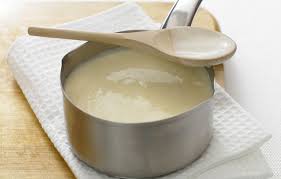
Bechamel
Béchamel; no this is not papa smurf. Béchamel deserves special mention, it's the proper, meaning traditional French, name for White Sauce.
This is used so often, it is the most common sauce a Chef will make.
There are a few little tricks to remember to make the perfect béchamel every time.
Measure. 1 litre of milk 100g butter, 100g flour.
Heat the milk, don't be a dick & boil it over, it just needs to be heated, tap water hot 60 degrees Celsius.
Melt the butter, add the flour, and cook it out until it goes a blonde colour.
Don’t overcook the roux or you will have brown burnt lumps in your sauce.
Set it aside to cool.
Away from the heat, pour a ladleful at a time of hot milk onto your cold roux stirring it in until it thickens.
If you have measured correctly the sauce will thin down to almost a liquid consistency.
Place the saucepan back on a low heat & stir continuously as it will thicken.
If it goes lumpy now' you can whisk it, just be careful of Aluminium pans, you can discolour the sauce with the steel whisk.
The perfect Béchamel!
Add cheese now for Mornay etc.
Bees
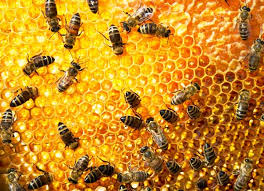
Bee
Bee; Not just a buzz word, Bees are the most important insect on the planet, and they are dying, dropping like flies! Bees are on the verge of extinction.
Bees are responsible for pollination, even a 5 year old can tell you that. But explain to a 5 year old how bees need a variety of crops to pollinate, they can’t pollinate a monoculture. Tell the little tacker how GM food is fucking them up faster than Ebola: The Good ole’ boys spray their mutated crops with pesticides to control insects… Um hello boys, Bees are an insect!
Some GM crops have been hybridised; specifically against Gods will I’ll add… With Cane Toad genes, this renders the plant toxic to nematodes that chew out the corn, as well as pollinating insects!
Do the Bees a favour, plant a few flowers! I grow Lavender, just for the Bees, they repay me by pollinating my garden! ( I even have a small population of paper wasps I allow residence)
Beef?
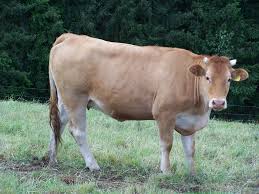
Beef
Beef; The sanitised name for Bovine flesh.
Beef sounds so much nicer than asking for say, a piece of dead cow.
Also it could be Bull, but unlikely, as most juvenile males relinquish their testes at an early age. This would then be known as a steer.
A Cow is usually kept for milking & they are kept until they are no longer producing, their meat value is minimal to say the least, they are usually emaciated & gaunt. Skin & bones...
A Heifer is a prime eating cow, young enough that it hasn't been bred.
Heifer & Steer are the prime eating animals, known for their white fat, dark red muscle with plenty of marbling in the muscle.
A Cow or an older animal usually have less fat, it will be yellow, and the meat will be darker.
Butchered meat is usually graded & marked with stripes according to its grade, from prime to manufacturing.
The better cut of beef you buy the better your result will be.
Think about manufacturing grades the next time you buy sausages!
Think also about the less fortunate who are doomed to eat manufacturing grade due to their incomes.
Why is it the poor have a lower life expectancy?
Bovines are Vegetarians, they only ever eat grass, and does that make it alright to eat them if you're a vegetarian?
Actually there is not enough protein in cellulose to sustain any animal, they actually produce their own…
Ruminants have 4 stomachs, they grind up and ferment the grass for the bacteria, the bacteria is where they get their nutrition.
beer
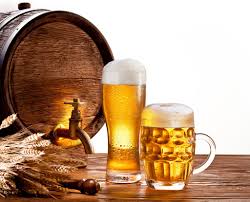
Beer
Beer; The pinnacle of man's interaction with nature,
Mankind & beer go back 9000 years.
Tablets discovered from ancient Egypt read "life is harsh, have a beer".
Beer was possibly discovered as a means of preserving excesses of grain.
The modern flavour of beer is not that much different to the ale of ages, the technique is basically the same, malt some grain, that is to bake the grain, soak it or boil it.
This was handy as potable tap water wasn't yet invented.
This wash was left to ferment, once the process was over it was what became known as 'Beer O'clock', later transcended to 'happy hour'.
Yeasts were whatever occurred naturally in that environment, often blown by the wind.
Hops were a later addition & were principally added as a preservative.
Hops are a member of the sativa family....
Interestingly enough, beer does not lend itself to chemical reproduction; it must be made the same way it has always been, naturally.
Beer is God's gift to Mankind, allegedly it was the mana passed from heaven to the Israelites.
Once upon a time it was regarded as food; beer was consumed with every meal.
Workers toiling in the field were given a large tankard of beer with their lunch.
This gave rise to the modern concept of the 'liquid lunch'.
Beetroot
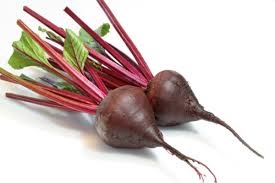
Beetroot
Beetroot; Can’t beat a Root?
As a curiosity, beetroot is a food with a notorious stain potential, careful; you don’t drop any on you.
But more alarming is the way the pigment is carried throughout the human body... Have I destroyed my kidneys?
Have I got a perforated bowel? I see red? I Pee red?
No it's just the dye from the beetroot!
Whole beetroot should be boiled or baked in their skin; the skin will come away easily once they are cooked.
They're about 7% sugar too! Quite high, if you're a vegetable!
My absolute favourite recipe which I'm going to share is Tabasco & Beetroot Mayonnaise.
Open a can, or cook some beetroot, personally I'd use baby beets or chunks.
Feel free to cook beets from raw, but convenience is compelling.
Open a bottle of Tabasco, Buy some Mayo, or make it yourself if you prefer.
Add beetroot to mayo, then Tabasco until you achieve the right degree of piquancy, that's sharpness or heat.
This comes out a lovely pink colour & is best used on meats, perhaps that BBQ you have saved from cremation?
The heat of the pepper sauce is offset by the cooling effect of the beetroot.
Any Red vegetable is good for you, bad for Cancer, Beetroot’s about as Red as it gets, so keep smoking suckers…
Berries
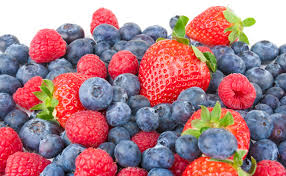
Berries
Berries; Berries are all fruit, but what we thought was berries are often simply misnomers.
A berry is made up of small aggregates of smaller fruits.
Each segment being a fruit with its own stone, or seed.
Blueberries, Cranberries are berries, Red & Black Currants, are actually berries.
Blackberries & Raspberries are not berries, they are composite fruit.
They actually belong to the rose family
Strawberries, nope, not berries.
Strawberry trees have actual berries.
Citrus fruit is technically a berry.
Then it gets confusing, there are true berries, false berries, compound fruit, aggregate fruit, multiple fruit.
Tomatoes, cucumber, pumpkin, kiwis, grapes, pineapple, cherries, beans, bananas, all technically berries.
It's all to do with the part of the plant, or the flower they are formed from.
To keep it simple we revert to common usage.
A berry is a small, usually round fruit, juicy. They may be sweet or sour, often toxic.
Brightly coloured & don't have a whopping big stone, or huge pip.
Bircher
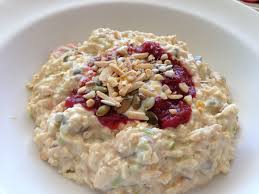
Bircher Meusli
Bircher Muesli: Muesli that was invented by a Swiss man Mr Bircher. It has come to mean pre-soaked muesli rather than the dry mix we see in shops.
Personally it hurts my jaw & lifts all my fillings, then binds me up for a week, eating muesli dry.
Try making your own mix, bake off some rolled oats & whatever else you fancy, dried fruit, nuts, seeds, grains...
Bircher was pretty easy when it came to his secret recipe, you can add to the dry mix, coffee, milk, yoghurt or fruit juice.
The latter 3 being my choice.
My favourite recipe is simply to grate a few apples into the dry mix & cover it all with apple juice or cider if you prefer?
Biscuit
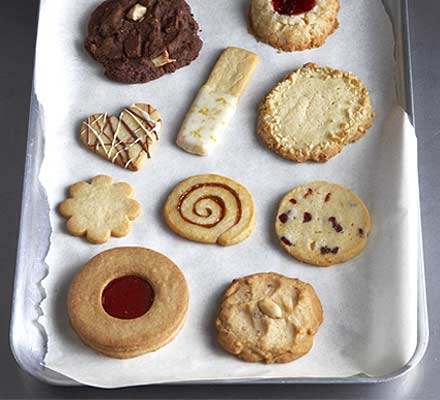
Biscuit
Biscuit; here's a can of worms, what’s a biscuit?
A cracker, a cookie?
It depends where you live. The British are rather fond of the austere teeth cracking biscuit.
Like a dog biscuit.
Americans prefer their cookies to be soft.
Traditionally biscuit is said to describe twice cooked unleavened bread that may be either sweet or savoury.
There is some speculation that the American war of Independence from British rule was indeed a battle of the biscuit.
The new Americans wanted their own cuisine, not founded on British traditions.
Tea made history as being tipped overboard, but lesser known is the quantities of biscuits the horrified English managed to escape with.
It is from these great upheavals, social revolution that change evolves.
From thence onward there have been cookies on the left, biscuits on the right.
Biscuits may contain many ingredients, they are just as likely to sandwich sweet fillings.
I believe in Australia 'bikkie' is the standard accepted term.
Biscotti are the Italian for & the derivative for biscuit.
Nowadays biscotti are taken to mean a biscuit that is twice baked.
Usually served with your favourite coffee.
bisque
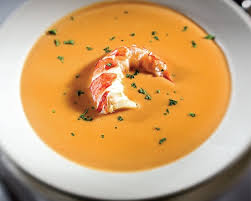
Bisque
Bisque; this is not as common as it once was. Usually bisque is a thickened seafood soup. Crayfish bisque used to be a staple on the menu in years gone by.
If you preferred not to eat the crayfish tail as a main meal, you could have bisque as entrée.
I used to use the crayfish bodies;
In a large pot on a high heat, with some oil I would add the Cray bods. Then smash them up with a large wooden spoon.
Add the mirepoix of vegetable, & continue to cook.
A healthy dose of brandy was always recommended about this stage and one for the bisque also!
Fill the pot with water & allow to cook as you would a stock for 2 or 3 hours.
Next step; make a veloute roux, add tomato paste, then add the stock back to it.
Discard the shell & the vegetable, they have given of their essence, nothing remains.
It will form a pinky red crayfish coloured & flavoured thick soup.
Season, add some cream & then add some crayfish medallions back to the soup.
Or for a budget model, add some chunks of firm fish fillets.
Eating the bisque, the chunks of fish take on the role of crayfish in the consumer’s eye. Another one of those 'what the eye sees as crayfish, the palate accepts as crayfish'.
Shrimp or crabs can be prepared in exactly the same manner.
Blanch
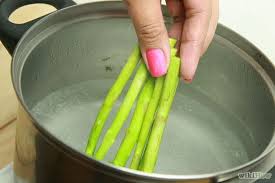
Blanch
Blanch; This usually refers to the process of submerging raw ingredients, usually vegetable, into boiling water, briefly, then transferring them to a cold liquid, water, ice or slurry of the two.
Blanching also assist with the removal of skin from tomatoes & similar fruit, (actually tomatoes' a berry).
Decore a tomato, score the other end, blanch it & you will have a whole peeled tomato!
Blanching enhances the appearance of some foods, greens appear brighter, and technically this is the surface gasses breaking down in the heat to truly reveal the chloroform.
Some vegetables such as Broccoli are mildly toxic & blanching destroys those toxins.
It is often useful in a commercial environment for vegetables etc which are required on a moment’s notice to be blanched, therefore reducing their final cooking time.
Dropping cold objects into a hot liquid does reduce the ambient temperature of the liquid.
In a typical meal service period, recovery times are crucial.
Recovery time is the time it takes for the medium, in this case liquid to revert to its optimum operating temperature, boiling point.
This is also a good point when you are deep frying.
The fat or oil is thermostatically controlled to not go above a certain temperature.
But it does not make it heat up any faster.
When I look for a fryer in a commercial enterprise I look for the amperage, the amount of grunt that fryer has to quickly regain its optimum working temperature.
A vat can lose as much as 40 degrees when a basket of chips is submerged in it!
The point being, we also blanch chips, from raw we precook them.
Blanching traditionally has several other contexts, most not in common use any more.
To whiten etc.
Boiling
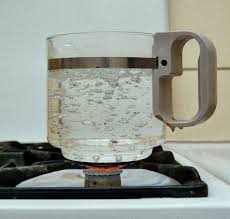
Boiling
Boiling; literally to cook your food in a boiling liquid.
Okay, how hot does water get? 100 degrees Celsius right.
That's if you live at sea level... water will boil at 95 a mile above sea level...
Okay, so why then do cooks & chefs waste energy by insisting on boiling at a high temperature?
Turn down the temperature until the water is at a 'rolling boil'. That is, the surface of the water is visibly moving.
There are not many things you truly need to boil, pasta yes, eggs yes, potatoes no, and they will just break down in the pot.
Really we only need to simmer most foods.
Don't boil meat, it will toughen.
Bring whatever you are cooking to the boil, and then turn it down to a simmer, the temperature will stay within a degree of boiling and you can be a more relaxed cook. Take your time, start earlier!
Boiling can be an efficient way of maintaining nutrients if you utilise the liquid the food has cooked in.
Bombe Alaska
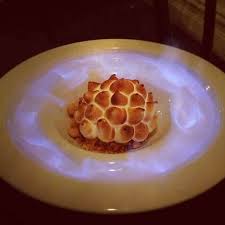
Bombe Alaska
Bombe Alaska; we used to make this at home, for special occasions & I have made it for Restaurants. It's really very simple;
Make a meringue from all those egg whites you've been saving.
Pile the meringue over a scoop of Ice cream. You can then refreeze it until you want it.
Place the bombe into a hot oven for 5 minutes max. Serve immediately.
The meringue just needs to be browned; it does not need to cook right through.
The middle takes on a marshmallow texture.
The centre remains frozen & the outside forms a crisp shell.
Black Pudding
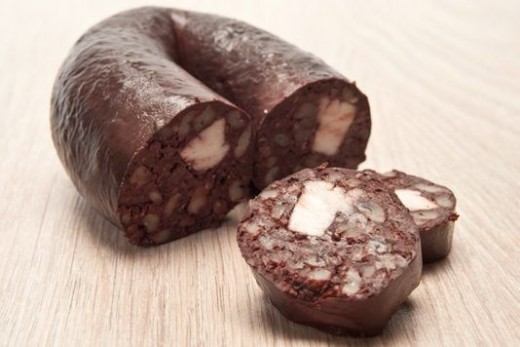
Black Pudding
Black Pudding aka Blood sausage
A Sausage, made with, you guessed it; Blood!
Black Pudding is of English origin, but similar products are found throughout the world.
I strongly doubt there would be Blood products in Halal or Kosher, part of their belief system ststes that life is in the blood, and should not be eaten.
Personally I’m quite fond of Black Pudding, sliced and grilled for breakfast!
And why not after all, an animal is giving it’s life to sustain us, so why not respect that and use every part you can?

Black Forest
Black forest; once this was a traditional recipe for a Gateaux or layered cake.
A rich Chocolate cake was sliced into layers, soaked in liqueur, then reassembled with butter cream, and marinated cherries.
The top would have shaved chocolate on it.
I see derivatives of it now, black forest ice cream, black forest chocolate, cheesecake.
As a cake these look pretty good, with the chocolate curls etc on the top.
Cutting in to them can ruin the presentation
So here's a tip; have a tall jug of hot water & a clean cloth.
Dip the knife in the water before you cut the cake. Wipe the excess water off it, with chocolate curls or ornate decoration on top, cut underneath them, portioning the cake.
This keeps it looking presentable. You can then cut through the decoration prior to serving it, or the first guest can have the lot!
You can ask your baker to portion it for you; also if you have trouble cutting cakes evenly, you can purchase templates which will guide you until you feel confident yourself.
Blonde

Blonde
Blonde; Is a genuine culinary term, it's a word describes anything lightly coloured.
A veloute is made from a blonde roux, giving it its characteristic colour & silkiness.
I use the term frequently when I'm cooking chips, (fry boy). "These chips are a bit blonde still, cook them longer!"
Blonde joke; Blonde goes in to Chinese laundry,
Says to very old man "Can you get this stain off my jacket"
The old man says "come again!", on account he's a little deaf.
"No" she says, "just mayo this time!"
Blini
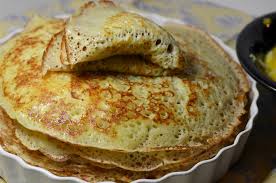
Blini
Blini; Buckwheat pancakes or crepes. They vary slightly but vary from crepes in that they are made with buckwheat & yeast. There are regional variants on Blini, but for the purposes of this exercise Blini is Blini.
Bok Choy
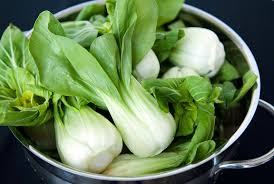
Bok Choy
Bok Choy; This is becoming a generic term to describe any Chinese cabbage.
There are pak choys, choy sums & bok Choy.
They're all pretty similar.
I prefer to use the term 'Asian greens'.
It avoids conflicts as to which Choy we are using.
Bolognaise
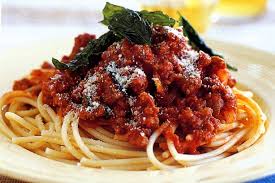
Bolognaise
Bolognaise; Nowadays more widely known as 'Spag Bol'.
Forget about the authentic Italian recipe from Bologna, Cuisines hybridise, bastardise & evolve.
Spag Bol as we know it now is a meat & tomato sauce.
Every home in the world has a recipe for spag Bol, even the Chinese.
Eye can make it at home in 20 minutes in a pan, but to make it professionally I have my own secret recipe, including, but not limited to the following;
Brown the mince,
I do this separately, on a grill for large quantities or a pan or wok.
Deglaze the pan with red wine.
I sweat off a mirepoix of leek, carrot, onion & celery.
Add the mince back to this, add the garlic & the herbs, don't burn the Garlic.
I use oregano dried, but now there's a range of Italian herb mixes on the market.
If you're going to use dry herb, sweat it to release the flavour.
Next in the pot is mushrooms & bacon, feel free to use pancetta.
Then its canned tomatoes, they's a brilliant product, cheap & tasty, I couldn't make them for what we buy them for.
Use a similar amount of tomato to your mince & add some tomato paste.
Let it slowly cook out for 3-4 hours, and be careful, cooking tomato is precarious. The tomato will stick to the bottom of the pot & burn.
To avoid this, I use a trivet or heat transfer, one of the tomato cans flattened out works well, but not if it's laminated!!
Also get your heat right, we're simmering, not boiling.
If you stir it & it has stuck, or caught on the bottom, don’t scrape it off it will ruin your sauce!
boneless
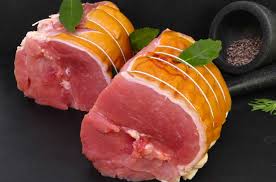
Boneless
Boneless; Lot's of recipes call for boneless cuts of meat. You can replace the bone with stuffing or a filling.
Be aware this will increase your cooking time. The bone acts as a heat conductor, transferring heat into the centre of the meat.
Unless you are proficient with a knife I strongly suggest buying your meat 'bone out'.
You can ask for it just boneless, which usually involves opening up the entire length of the joint to remove the bone.
You can stitch it back up, tie it or skewer it.
Tunnel boning is a bit more difficult, you have to tunnel around the bone, pulling the joint inside out as you go.
You are left with a more presentable cut of meat, just stuff it & skewer the open end.
When we talk about fish we call it filleting, we cut the fillets off the main frame of bones.
It is possible to tunnel bone certain fish using a beer bottle.
For example a trout; take off the head.
Push the backbone into the neck of the beer bottle & bear down.
The backbone will slide inside the bottle. Cut it off at the tail. Whole boneless fish!
Personally I've had a lot of experience with boning; I’ve boned all sorts of birds, quail, chicken, ducks, geese, turkeys, kangaroos, deer, pigs, sheep, goats, beef, cats...
Bouquet Garni
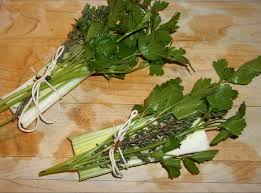
Bouquet Garni
Bouquet Garni; This is the term given to a bunch of herbs, tied together & thrown into a pot of liquid. The idea is that it can be removed upon completion of the cooking process.
It is used in stews as well as court bullions.
Often it is wrapped in the likes of a leek leaf & tied with string.
Traditionally it includes, but is not limited to; bay leaves, peppercorns, onion, cloves, thyme and parsley stalks.
Incidentally, when it is tied up in a bundle, it is known as a faggot.
Braise

Braise
Braising; Don't be confused with welding brass, that's Brazing.
Braising as we know it is a method of cookery.
Braising is to slow roast, usually a cut of meat, but not exclusively, vegetables can be braised.
It's a combination method, of dry heat, or convection, plus contact & immersion.
Pot roasting is the American term, it also includes crock pots.
Braising is an effective way of utilising cheaper cuts of meat.
Often the tougher cuts are cheaper, the prime cuts being more popular.
This is definitely a convenience factor.
Taking the time to braise, say a stewing steak will be rewarded with a mouth watering dish, full of flavour & retaining most of its nutrition.
I'll give lamb shanks as an example.
Where I come from lamb shanks were dog tucker, we wouldn't dream of eating them.
You should've seen our dog, he'd eat us first!
Take a hot pan; you shouldn't need much oil, as it will burn.
A spray should be enough to stop it sticking.
Place your lamb shanks in the pan, colour them well on all sides.
Dice some carrot & onion & garlic cloves, throw them in the pan, carefully & colour them too.
Deglaze the pan with some wine perhaps, maybe some tomatoes in a can, maybe some stock.
Throw in some herbs, maybe rosemary?
Add a bit more liquid if necessary, just too barely cover the shanks, they should more or less be exposed, sitting on top of the vegetables.
You can transfer this to a braising dish with a lid if you like.
You can use a braising dish in the first instance instead of the pan, if you like, save on the clean up!
If you wish to stick with the pan, cover it in al' foil & place it low in an oven set to about 160C.
About 3 hours later it should be starting to smell like it's cooked.
Carefully remove it from the oven.
(Make sure you have dry clothes or oven mitts, don't go getting burned on my account.)
Remove the meat & set aside.
The remaining cooking liquid may be skimmed to rid it of the fat that will have risen to the surface.
Then mash or blitz the stock, including the veg to make a sauce.
Alternately you could cut the veg larger & serve them whole alongside the meat, as a vegetable.
B randy snaps
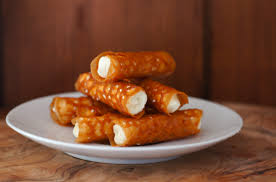
Brandy snaps
Brandy snaps; these don’t have brandy in them! They’re a flattened biscuit of sorts.
Made of Golden Syrup, mixed with flour, & ginger.
Once they are briefly baked & while they are still soft, they can be rolled around a stick, or for brandy snap baskets, formed into patty tins.
I've always preferred the latter; the baskets make perfect little vessels for fruits & cream combinations.
Brandy snaps can be filled with flavoured cream, but will go soft so make them to order!
Give us our daily...
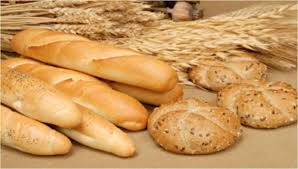
Bread
Bread; Breads have seen mankind develop & flourish with its help.
Once Man discovered that crushing seeds to a paste yielded a substance which, with a bit of water, would bind together to produce a dough.
This dough would form a cake in the fire, making it much easier & convenient to handle.
Also extending the storage life, they didn't have shelves back then for shelf life.
Almost every culture in the world has a recipe for bread, with perhaps the exclusion of the Ennuit; they're still working on growing on the ice & ice ovens...
Nowadays Bread is commercially produced & yeast is added more as a flavouring ingredient than a leavening agent.
There are 2 sides to a loaf of bread.
The inside & the outside, the inside of a loaf, the bread part, is called crumb.
The outer half is called crust. Crust or crumb, they can both make crumbs.
Once all bread was of the sourdough type, until someone identified the right yeast to use, without the lactic acid fallout from the yeast.
Some things are good just the way they are... Flatbreads, Turkish pide, lavash, Mexican tortilla, Indian naan, all have remained unchanged for millennia. If it aint broke, don't fix it!
Don't store bread in your fridge, it'll go stale anyway.
Bread is not meant to be preserved, eat it while it's fresh. Get some more when it's gone. Don't lose sleep over it!
Sliced bread was invented by an American, Otto Frederick Rohwedder in 1928.
“The best thing since sliced bread” was an advertising campaign at the time!
Never heard of Otto, sorry, but the phrase has stayed with us.
Broccoli
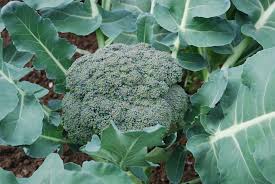
Broccoli Broccolini
Broccoli; These are one of my favourite vegetables.
It is not unusual to see me speaking lovingly to a head of broccoli.
Pick the tight heads & watch for bugs.
Blanch them very quickly; they deteriorate very quickly when overcooked.
They're dead easy to grow & every home with a garden should have a constant supply of broccoli.
Broccoli is a cousin to the Cauliflower, and the cabbage, some other variant models available are, Romanesque, more like a green cauli, and;
Broccolini.
If you want to make friends & influence people, add some of this to your menu.
If you don't have access to Broccolini or it's not in your budget...
When your Broccoli is ready to harvest, cut the head off & leave the plant still growing.
The resultant shoots closely resemble Broccolini & you can confidently serve them to your guests as such.
Technically Broccolini is a hybrid & separate plant.
Shh it's a kind of magic, if the eye believes it the mind will follow...
Brian?
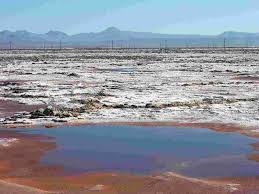
Brine
Brine; My mate brine? No not your mate; Brine, not Brian.
Brine is a salt solution used mostly in pickling & curing.
Brining is an ageless method of food preservation; before refrigeration was invented.
If you didn’t eat your meat fresh it was cured in barrels of brine, for consumption at a later date.
The scientific explanation for this being; bacteria cannot survive at high levels of salinity, as it removes the availability of moisture to the little critters.
Brioche
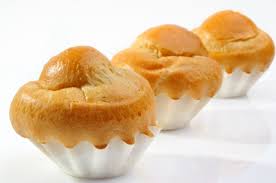
Brioche
Brioche; these are a sweet bread from days gone by; personally I haven’t seen or heard of Brioche in years.
It's an enriched bun, sweet with eggs & butter.
Traditionally it's served like a snowman.
One big ball, with a smaller head on top.
It never had a carrot for a nose.
The name Brioche then lends itself to anything snowman in shape.
Brioche potatoes are mash formed into the snowman shape, cooked & served like snowmen, except hot.
Real snowmen tend to melt.
Broil
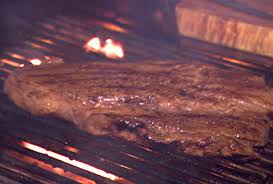
Broil
Broiling; This is a method of cookery. To broil is what us new worlders call Grilling.
Broiling is to contact cook on a hot surface.
For example a steak.
Broiling differs slightly to mean mostly food cooked on a raised rib grill or char grill.
To broil is to leave scorch marks upon your ingredient.
A grill has become the flat plate contact grill.
As opposed to an overhead toaster type grills which cooks by radiation from a direct heat source& known as a Salamander!
Brown?

Browning
Browning; To colour & to seal.
As discussed earlier, browning develops the flavour of food, it's not just for visual considerations, and food looks good brown because it tastes good brown.
This is mostly to do with the natural sugars in food caramelising, and other more complex chemical reactions, which will just spoil your appetite!
There are so many examples, bread to roast meat.
Mr Brown is our friend, Mr Black is not.
Hot news just in of the press. Browning the meat on both sides to seal in the juices is a myth!
Scientific tests have indicated no difference in net weight.
Still I like my steak with the edges crisp & brown & the inside pink & moist.
Brulee
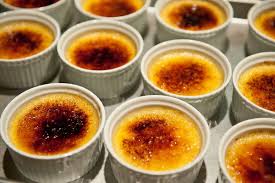
Brulee, Cream Brulee
Brulee, cream Brulee; AKA Crème Caramel.
An egg custard with a caramel topping, hard or soft.
These aren't so hard to cook, so long as you stick to the basics.
Make a Crème Angliase.
Make a caramel.
For Crème caramel, pour the caramel into the bottom of a ramekin.
Fill with the Angliase mixture, & cook en bain-marie in the oven, that is uncovered, standing immersed in a dish of hot water.
That's the ramekins go in the hot water, not the chef.
Set the water level about 3/4 the height of the ramekin. Place gently in the bottom of a moderate oven for about 25 minutes, maybe more, maybe less.
Try & pull them out before they are completely set. The latent heat will continue to cook them through.
Allow them to chill. A Crème caramel is turned out onto a plate so that the caramel runs over the custard. Brulee's are dusted in granules of sugar which is caramelised. A blow torch is quite handy for this process.
The traditional way is to use a Brulee spoon.
Put a spoon over a gas flame until it is blue, use the back of the spoon to caramelise the powdered sugar.
Try adding various crème liquors to the Angliase, Irish crème, coffee liquors etc.
Bruschettta
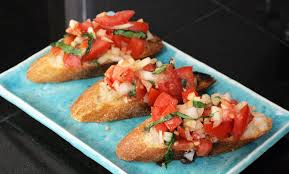
Bruschetta
Bruschetta; another bastard dish, once upon a time it was a slice of toast rubbed with a clove of garlic.
Try serving that up, tell your customers it's the authentic recipe, and see how far that gets you...
What you would expect nowadays is more akin to a slice of garlic bread topped with diced tomato, some herbs & and maybe a cheese.
My personal, top secret recipe is;
For the bread, use a Vienna or baguette sliced long & thin, brush it with garlic & olive oil, bake it until its crisp, pretty much a crouton.
The tomato mix, I prepare a day in advance, let the flavours mellow.
Finely diced Spanish onion, or shallots if you can get them, shredded basil leaves, maybe a touch of oregano, or substitute it all together.
The tomatoes, I deseed & fillet, but leave the skins on, use Roma's.
I don't like raw garlic, there's garlic in the bread, but if you like, use some roasted garlic?
I use rock salt, & cracked black pepper.
Please yourself what cheese you want to use, I prefer shaved Parmesan, to top it. Served cold with sea salt flakes & parsley to garnish.
Buckwheat
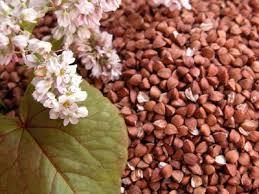
Buckwheat
Buckwheat; Now here’s another of those misconceptions.
Buckwheat is not wheat; it’s not a cereal, or even a grass.
What it is is a shrub that has been around for eons.
Gluten free flour is made from the seed & has a darker colour & an ‘earthy’ aroma.
Blini, a pancake is made from buckwheat flour that sounds Russian because it is.
They’re also used to make noodles, Japanese & Korean especially.
While it’s all good being gluten free; Buckwheat contains an allergen itself that can induce anaphylactic shock.
Fortunately, for us white folk; this is rare, but relatively common in Japan & Korea.
Bullion?

Bullion
Bullion; this can be a bit misleading, so don't stress on it, it's a fairly rare term nowadays anyway.
Bullion can be a soup, a broth, or more Specifically the French name for the stock that is the basis for many recipes.
Bouillon cubes are where you are most likely to find the term bullion.
These are cubes of dehydrated bullion; they often have very high levels of salt & are nothing at all like their reconstituted origins.
In fact I worked briefly in a Beef stock, or soup stock manufacturing operation.
Tons of bones were steamed under pressure, the fat was separated & the stock that remained was salted, to the tune of about 40kg in a ton of liquid.
This was then passed through an evaporator. Under vacuum & at a lower temperature the water content was boiled off.
The remaining concentrate was very thick, and salty.
Personally I'm not a fan of using bouillon cubes in a recipe.
I just don't like the flavour, it's nothing at all like beef stock.
Burger
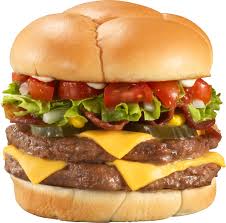
Burger
Burger; this has become a true American icon.
The burger or Hamburger is not from Hamburg & does not contain ham.
Today we find burgers in almost every part of the world, mostly western franchises, adapted to local conditions.
Try finding a double beef burger in downtown Delhi!
The local variant for this part of the world is the addition of beetroot to the burger.
You will find this in Australia & New Zealand only.
My special recipe for gourmet burgers is not the one I make at home; to be a gourmet burger requires it to be a step above the takeaway burger & too much effort for home.
At home I use lean mince, an egg, some crumbs, diced onion & some seasoning. I like to use those instant seasonings, Garlic & Oregano etc.
For a gourmet experience, I sweat down onion & garlic & the dried seasonings.
In a Hobart, or large mixer I'll blend the mince with Tomato sauce, Worcestershire (Black sauce) & sweet chilli.
Plus eggs & the breadcrumbs.
I use a mould, larger than an egg ring; this gives me consistency of size & weight.
A standard burger should have a toasted bun, lettuce, tomato, beetroot & tomato or BBQ sauce.
Burgers with the lot or the works have all this plus; a rasher of bacon, a slice of melted cheese & a fried egg.
Sometimes Gourmet burgers get ridiculously high & are obviously impractical to eat, unless you have a jaw like a snake, or a mouth like a hippo.
There is a certain wow factor in being presented a towering burger to your table, then as soon as the wait staffs turns their back it falls into your lap.
Burgers are served with a large skewer holding them together.
Host responsibility ends at the removal of the skewer.
Have you ever noticed your waitress ignoring your pleas for assistance until the burgers are gone?
It's true; we don't want to know about it!
Buyers beware; eat at your own risk.
We give you napkins, if you can't handle you should have ordered something less bulky, you greedy pig!
Customer service only extends as far as the pass, what goes on in the kitchen stays in the kitchen.
It's not uncommon for wait staff to point out an unruly customer as "that fat fu*k in the corner"
Burnt
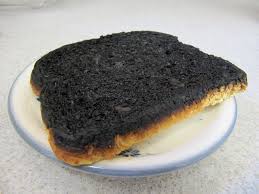
Burn
Burn, burned, burnt; three words that jelly the spine of the most robust Chef.
We do not burn; this is not incineration or arson.
We carefully control the amount of heat applied to an ingredient for the optimum time to give us the expected yield.
However in the words of Plato 'shit happens'.
There is a human element in cooking and as such errors may result from lack of concentration, or neglect.
A simple timer is the best way to avoid these mishaps.
I can smell burnt toast from a city block away, so there's no point in trying to con your way out of a bad situation.
You cannot put reality on hold for your guests.
Sometimes you can minimise the damage by excising the burnedest section, the top of a cake...
A little trick, if it's a liquid, perhaps a sauce or a soup, try adding some sugar, it will cancel the burnt smell!
Sometimes a dash of cream can help with harsh flavours, but generally speaking Prevention, buy a timer, and use it!
Burnt pots?
Soak them overnight with detergent.
Let the soap do its thing.
Next day take to it with a scraper, get under the burnt layer, don't try scrubbing your way through it, and lift it all out!
I've had Kitchen hands offer to swap jobs; it takes me 1 minute to do their job, because I've done it before!
I learned the hard way; I came up through the ranks, so I'm well acquainted with the dishwasher!
Another recent concept I've learned is to put the pan/pot back on the heat.
The burn will actually separate from the metal!

